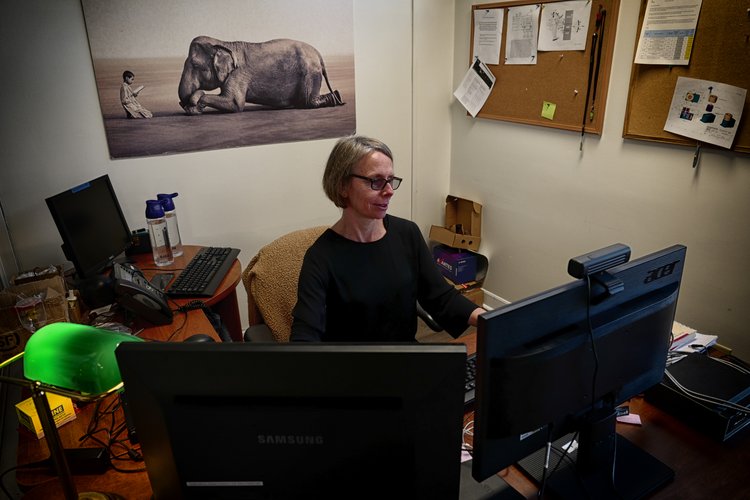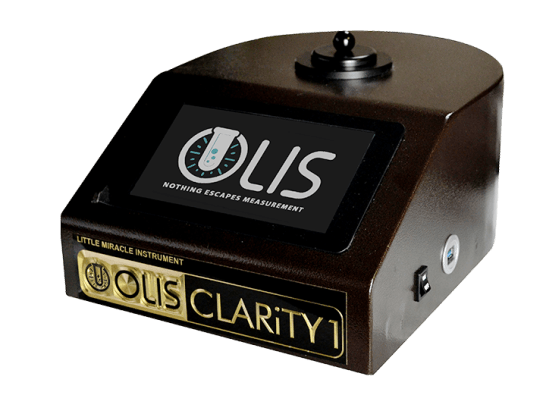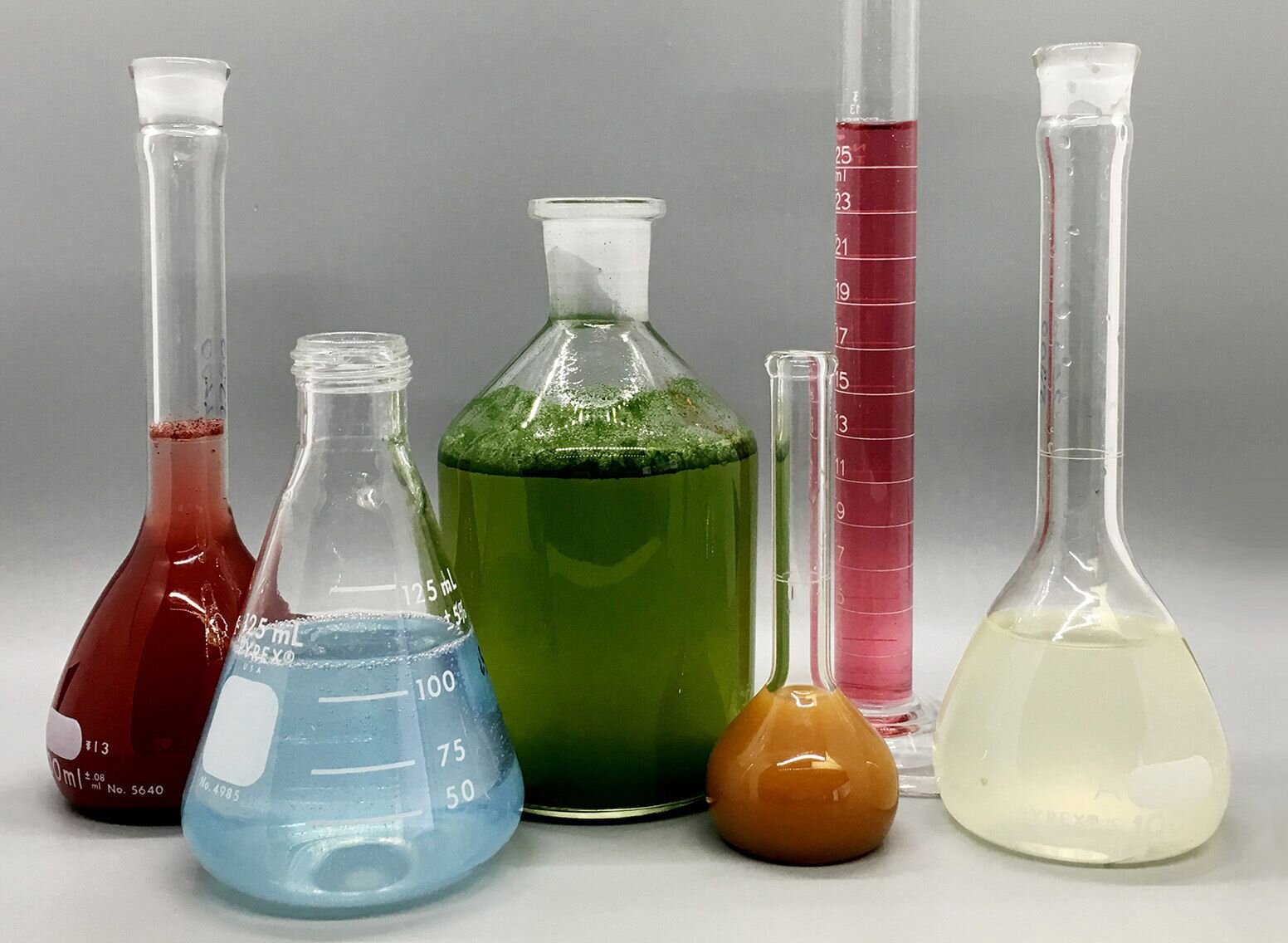How Uv/vis can Save You Time, Stress, and Money.
Table of ContentsThe 10-Second Trick For Circular DichroismThe Definitive Guide to SpectrophotometersThe Best Guide To Circularly Polarized LuminescenceGetting The Circular Dichroism To WorkThe Greatest Guide To SpectrophotometersGetting My Uv/vis To WorkNot known Facts About Uv/vis/nirSome Ideas on Circularly Polarized Luminescence You Should KnowThe Buzz on SpectrophotometersSpectrophotometers - The FactsOur Uv/vis StatementsThe 9-Second Trick For SpectrophotometersThe Only Guide for Spectrophotometers
It is then scanned through the sample and the recommendation solutions. Portions of the event wavelengths are transferred through, or reflected from, the sample and the recommendation. Electronic circuits transform the relative currents into linear transmission percentages and/or absorbance/concentration values.The transmission of a referral compound is set as a baseline (information) value, so the transmission of all other compounds are recorded relative to the initial "zeroed" substance. The spectrophotometer then transforms the transmission ratio into 'absorbency', the concentration of particular components of the test sample relative to the preliminary compound.
Considering that samples in these applications are not readily available in big amounts, they are particularly fit to being evaluated in this non-destructive method. In addition, valuable sample can be conserved by using a micro-volume platform where as little as 1u, L of sample is required for total analyses. A quick description of the procedure of spectrophotometry consists of comparing the absorbency of a blank sample that does not contain a colored substance to a sample which contains a colored compound.
The 7-Second Trick For Uv/vis
In biochemical experiments, a chemical and/or physical property is picked and the treatment that is used is specific to that property in order to obtain more information about the sample, such as the quantity, pureness, enzyme activity, etc. Spectrophotometry can be utilized for a variety of techniques such as determining optimal wavelength absorbance of samples, determining ideal p, H for absorbance of samples, determining concentrations of unknown samples, and figuring out the p, Ka of various samples.: 21119 Spectrophotometry is also a valuable process for protein purification and can likewise be used as a method to produce optical assays of a compound.
It is possible to know the concentrations of a 2 component mix using the absorption spectra of the standard services of each element. To do this, it is needed to understand the termination coefficient of this mix at two wave lengths and the termination coefficients of solutions which contain the recognized weights of the 2 parts.

The 5-Minute Rule for Uv/vis
Area. The concentration of a protein can be approximated by measuring the OD at 280 nm due to the existence of tryptophan, tyrosine and phenylalanine.
This technique needs a spectrophotometer capable of measuring in the UV region with quartz cuvettes.: 135 Ultraviolet-visible (UV-vis) spectroscopy involves energy levels that delight electronic transitions. Absorption of UV-vis light thrills particles that are in ground-states to their excited-states.
These curves can be utilized to evaluate a brand-new batch of colorant to examine if it makes a match to requirements, e
Traditional visible region noticeable can not detect if spot colorant or the base material has product. This can make it difficult to handle color problems if for example one or more of the printing inks is fluorescent. There are 2 major setups for visual spectrum spectrophotometers, d/8 (spherical) and 0/45.
Scientists utilize this instrument to determine the quantity of substances in a sample. In the case of printing measurements 2 alternative settings are frequently utilized- without/with uv filter to control better the impact of uv brighteners within the paper stock.
Rumored Buzz on Uv/vis
Some applications require small volume measurements which can be carried out with micro-volume platforms. As described in the applications area, spectrophotometry can be utilized in both qualitative and quantitative analysis of DNA, RNA, and proteins. Qualitative analysis can be used and spectrophotometers are used to tape spectra of compounds by scanning broad wavelength regions to determine the absorbance properties (the intensity of the color) of the compound at each wavelength.

The Facts About Spectrophotometers Uncovered
One significant factor is the type of photosensors that are offered for different spectral regions, but infrared measurement is also challenging because practically whatever produces IR as thermal radiation, particularly at wavelengths beyond about 5 m. Another complication is that several products such as glass and plastic absorb infrared, making it incompatible as an optical medium.
2013. p. 13. Allen, DW; Cooksey, C; Tsai, BK (Nov 13, 2009). "Spectrophotometry". Retrieved Dec 23, 2018. Ninfa AJ, Ballou DP, Benore M (2010 ). Essential Laboratory Methods for Biochemistry and Biotechnology (2nd ed.). Hoboken: Wiley & Sons. ISBN 9780470087664. OCLC 488246403. Schwedt G (1997 ). The vital guide to analytical chemistry.
Oke, J. B.; Gunn, J. E.
Some Known Details About Uv/vis

Ninfa AJ, Ballou DP, Benore M (2015 ). Essential Laboratory Approaches for Biochemistry and Biotechnology (3, rev. ed.). circularly polarized luminescence. Laboratory Equipment.
Our Uv/vis/nir Statements
Recovered Jul 4, 2018. Trumbo, Toni A.; Schultz, Emeric; Borland, Michael G.; Pugh, Michael Eugene (April 27, 2013). "Applied Spectrophotometry: Analysis of a Biochemical Mixture". Biochemistry and Molecular Biology Education. 41 (4 ): 24250. doi:10. 1002/bmb. 20694. PMID 23625877. (PDF). www. mt.com. Mettler-Toledo AG, Analytical. 2016. Recovered Dec 23, 2018. Cortez, C.; Szepaniuk, A.; Gomes da Silva, L.
"Exploring Proteins Purification Techniques Animations as Tools for the Biochemistry Mentor". Journal of Biochemistry Education. 8 (2 ): 12. doi:. Garrett RH, Grisham CM (2013 ). Biochemistry. Belmont, CA: Cengage. p. 106. ISBN 978-1133106296. OCLC 801650341. Vacation, Ensor Roslyn (May 27, 1936). "Spectrophotometry of proteins". Biochemical Journal. 30 (10 ): 17951803. doi:10. 1042/bj0301795.
PMID 16746224. Hermannsson, Ptur G.; Vannahme, Christoph; Smith, Cameron L. C.; Srensen, Kristian T.; Kristensen, Anders (2015 ). "Refractive index dispersion picking up using a selection of photonic crystal resonant reflectors". Applied Physics Letters. 107 (6 ): 061101. Bibcode:2015 Ap, Ph, L. 107f1101H. doi:10. 1063/1. 4928548. S2CID 62897708. Mavrodineanu R, Schultz JI, Menis O, eds.
Circular Dichroism Can Be Fun For Anyone
U.S. Department of Commerce National Bureau of Standards special publication; 378. Washington, D.C.: U.S. National Bureau of Standards. p. 2. OCLC 920079.
The process begins with a controlled light my company that lights up the evaluated sample. In the case of reflection, as this light communicates with the sample, some is taken in or given off. The given off light travels to the detector, which is examined, quantified, and provided as industry-standard color scales and indices.
All terms are evaluated over the visible spectrum from 400 to 700 nm. In the case of transmission, when the light interacts with the sample, it is either absorbed, shown, or sent.
The 8-Second Trick For Uv/vis/nir
Examples include APHA (American Public Health Association) for watercolor and pureness analysis, ASTM D1500 for petrochemical color analysis, edible oil indices utilized in food, and color analyses of drinks. All terms are assessed over the visible spectrum from 400 to 700 nm.
Image Credit: Matej Kastelic/ Dr. Arnold J. Beckman and his associates at the National Technologies Laboratories initially invented the spectrophotometer in 1940. In 1935 Beckman founded the business, and the discovery of the spectrophotometer was their most ground-breaking invention.
The Spectrophotometers Statements
99% precision. Gradually, scientists kept improving the spectrophotometer style to improve its performance. For example, the UV capabilities of the model B spectrophotometer were improved by changing the glass prism with a quartz prism. Eventually, the Design DU was developed, containing a hydrogen lamp and other improvements. This instrument was utilized in commercial laboratories, centers, and chemistry and biochemistry departments.
Normally, a spectrophotometer is made up of 2 instruments, specifically, a spectrometer and a photometer. A basic spectrophotometer includes a light source, a monochromator, a collimator for straight light beam transmission, a cuvette to position a sample, and a photoelectric detector.
The smart Trick of Circularly Polarized Luminescence That Nobody is Talking About
There are different kinds of spectrophotometers in various sizes and shapes, each with its own function or performance. A spectrophotometer figures out just how much light is shown by chemical elements. spectrophotometers. It determines the difference in light intensity based on the total quantity of light presented to a sample and the quantity of light beam that goes through the sample option
A spectrophotometer is utilized to determine the concentration of both colorless and colored solutes in a solution. This instrument is used to figure out the rate of a response.